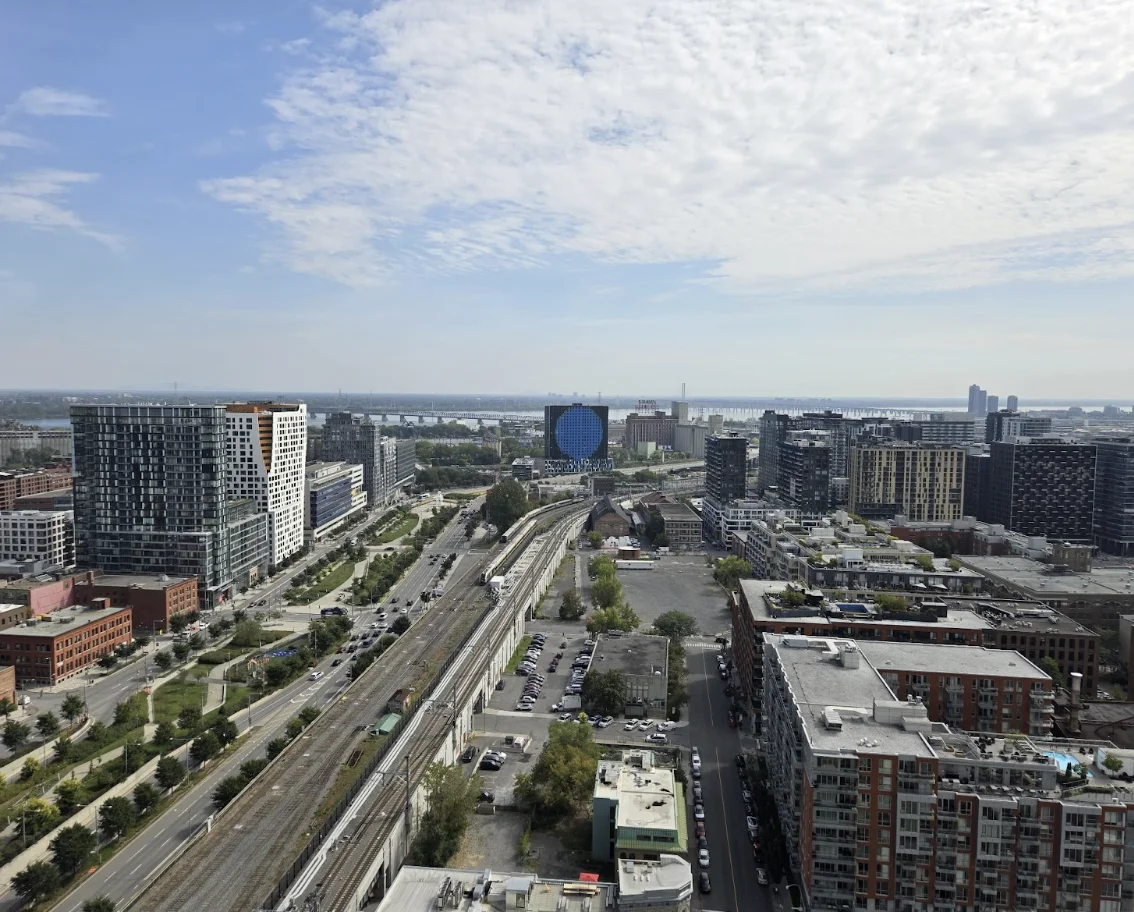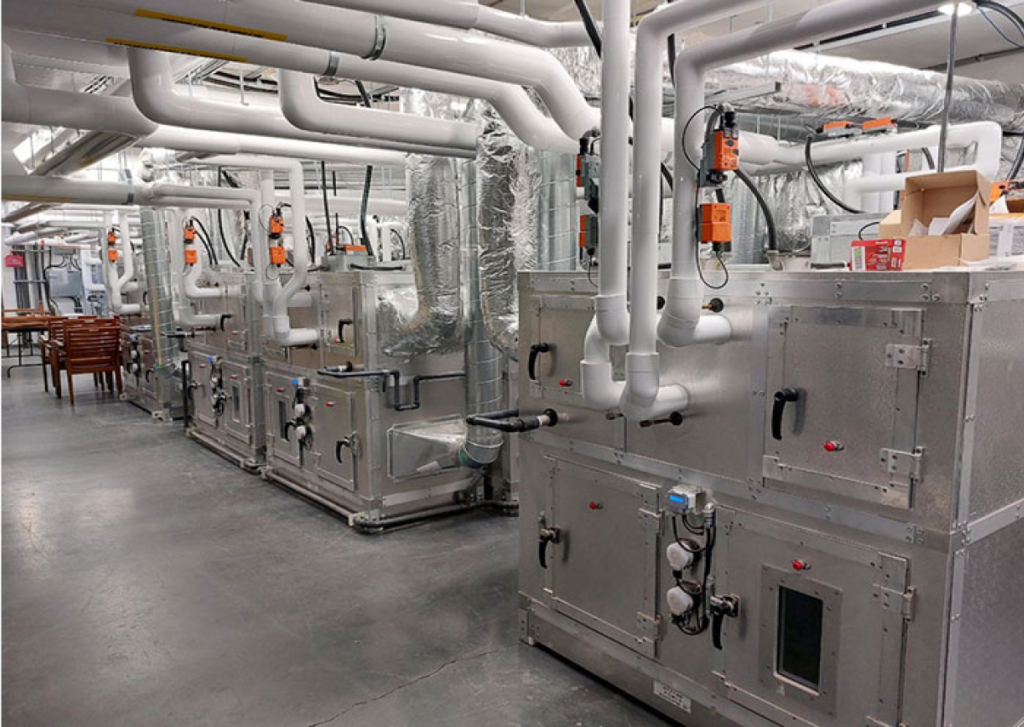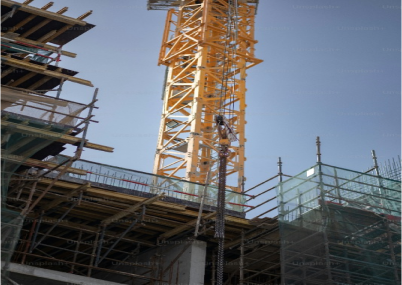A Behind-the-Scenes Look at SMP LeBlanc’s HVAC Work at Le 900 Saint-Jacques
Le 900 Saint-Jacques stands 200 meters tall in the heart of Montreal as a future landmark that’s still under construction, with phase 2 set to be done in 2025. This mixed-use development will soon house both commercial and residential spaces, and keeping its climate systems functioning flawlessly is no small task.
Our team of HVAC technicians at SMP LeBlanc were brought on board to perform a vital service—water balancing. We were part of the construction’s first phase and in this blog, we’ll break down our approach at Le 900 Saint-Jacques, alongside some of the challenges our team faced and how we came out on top.
Let’s get right into it.
The Project at Le 900 Saint-Jacques
Water balancing is essentially about regulating water flow in heating and cooling systems, making sure the building gets the right amount of temperature-controlled water at every point. Proper balancing guarantees that each zone within a building receives just the right amount of heating or cooling—no more, no less.
But this isn’t just about turning a few dials. In a structure as large as Le 900, the stakes are high. Uneven water distribution can lead to inefficiencies, with some parts of the building receiving too much cooling or heating while others are underserved.
We took on the challenge, ensuring that each section of the building got exactly what it needed. Speaking of challenges, that brings us to our next section.

The Challenges of Water Balancing
As you would imagine, water balancing in a building as large and complex as Le 900 Saint-Jacques, is far from simple. Our team had to ensure the perfect distribution of temperature-controlled water to every corner of the building.
If there’s one thing that can make or break an HVAC system, it’s cleanliness. Before even beginning the complex task of water balancing, our team had to ensure the network itself was pristine. Construction sites are notoriously dusty, and debris can easily clog up pipes or damage key components like sieves.
Ensuring network cleanliness was a top priority. Our technicians spent hours monitoring the system to ensure that when the heat pumps were finally commissioned, they worked without a hitch. This was a necessary task to keep the project on track. But what does that really involve?
Well, if we were to paint you a picture, that would involve our technicians crawling through tight, dimly lit service areas, checking for blockages, leaks, or other potential issues that could throw the balance off.
Now we know that’s hard to believe given all the cutting-edge HVAC techniques we use (we’ll highlight them in the next section), but even with advanced tools for measuring flow and pressure, physical obstructions, or leaks our technicians still need to visually inspect them (FYI, typically it is the plumber’s job to clean and repair CBV and leaks, but we do visually inspect for them).
Our High-Tech HVAC Tools and The “Why” Behind the Tools
Our water balancing approach was more about preventing problems before they occur just as much as we were solving them. To help us achieve this, we heavily relied on tools like frequency inverters, high-precision hydromanometers, and ultrasonic flowmeters. But why these specific tools?
Think of the hydromanometer as a blood pressure monitor for the building’s water system. It ensures that water flows through the pipes at the correct pressure, just like how a blood pressure monitor ensures your heart is pumping blood properly. Too high, and the system could burst a pipe or overheat; too low, and parts of the building won’t get enough heating or cooling.
Meanwhile, the frequency inverters allowed us to control motor speeds with incredible accuracy. This meant the HVAC system could respond dynamically to the building’s real-time needs, making it not only more efficient but also more eco-friendly.
The ultrasonic flowmeter, on the other hand, allowed for precise measurements of water flow without cutting into pipes—essential for a building where every minute of downtime counts.
By choosing the right tools for the job, we didn’t just complete Phase 1 of the project—but also ensured that Le 900 Saint-Jacques’ primary water heating and mixed water circuits would operate at peak efficiency for future work to come.

About Future Phases
As of now, we have only completed around 20-25% of the project and wrapped up Phase 1 at the end of September. The project is far from over, with several more stages left before Le 900 Saint-Jacques is ready for occupancy. The good news is that this early work has already set the foundation for future success.
Our proactive approach and innovative use of technology have ensured that everything is running on schedule. Also, we’ve preemptively addressed issues like circuit cleanliness, which will undoubtedly pay off when the building is fully operational.
Optimizing Building Comfort & Efficiency for 40 years!
Behind every successful project is a team of experts who understand that it’s the little things that make the difference. We’re proud to contribute to our community’s growth by being part of what many already consider a future landmark in Montreal.
As a three-generation, family-owned business with over 40 years of experience, we specialize in optimizing air and fluid systems in commercial and institutional buildings across Quebec. Our seasoned HVAC technicians leverage cutting-edge technology to deliver precise system analysis, air and hydronic balancing, leak detection, and so much more that ensures every building we touch runs smoothly and efficiently.

What HVAC Air Balancing Is and Why It Matters to You
Ensure Comfort and Efficiency with HVAC Air Balancing

Understanding the Role of Air and Water Balancing in HVAC Systems
The Crucial Connection Between Air and Water Balancing in Commercial HVAC Systems